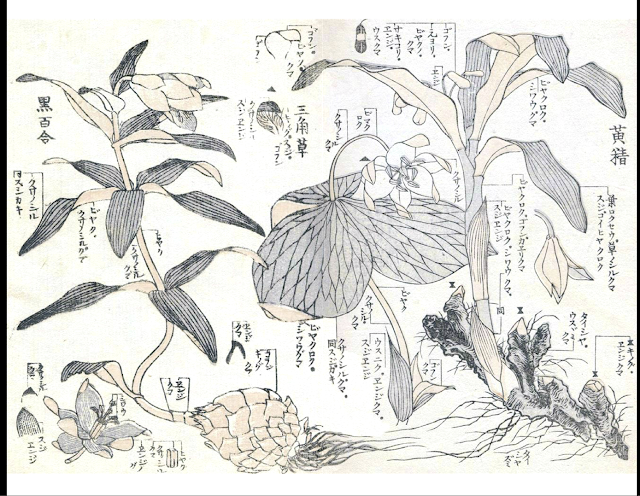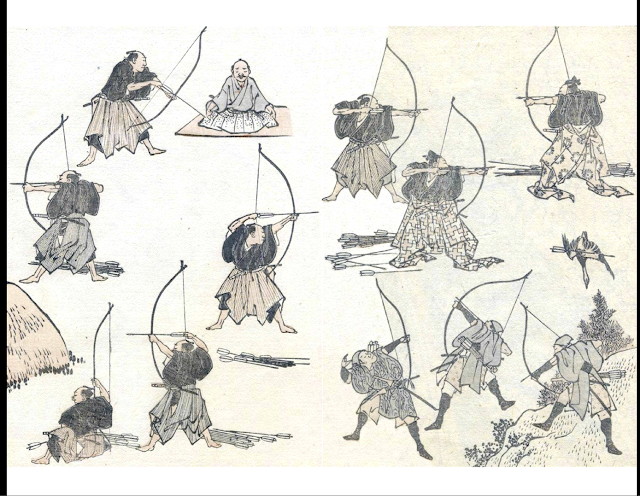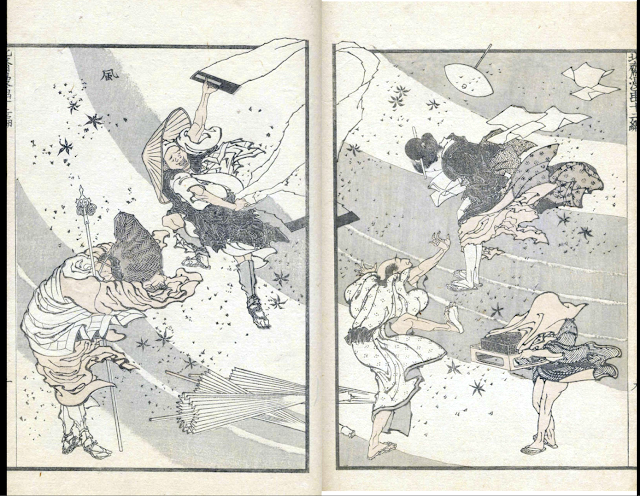Katsushika Hokusai is a painter from the Edo period whom I love very much.
In Japan, Hokusai's famous work "The Great Wave off Kanagawa" is used on the reverse side of the new 1,000 yen note that was issued in 2024.
There are so many episodes and works by him that we will be introducing Hokusai in several parts.
Today, I will be talking about "Hokusai Manga".
When we say "manga", we generally mean comics, but in this case, "manga" refers to Hokusai's sketches.
In countries other than Japan, they are called "Hokusai sketches".
At the same time, they also became models for his disciples to use.
There are a total of 15 volumes of "Hokusai Manga" (1814-1878), containing 4,000 sketches. When they were first released, they were advertised with a catchphrase.
In this article, we will introduce some sketches from the "HOKUSAI MANGA".
("HOKUSAI MANGA" (Hokusai sketch) can be purchased at a very reasonable price. In some cases, you can get it for free as an e-book. If you are interested, please try searching for it.
In the Edo period in Japan, the common people were the main characters. Kabuki was the most advanced form of pop culture, and ukiyo-e was like a magazine for keeping up with the latest trends.
 |
| Hokusai sketched various people, including people fishing, people
fighting and people stopping them, and people repairing fishing nets. |
 |
| Edo people |
 |
| On the left are Japanese gods, and on the right are illustrations of characters from old stories. Hokusai also sketched things that did not exist. |
 |
| Sketches of animals and birds. Hokusai also sketched birds in flight beautifully. |
 |
| Various poses of birds. |
 |
| Plants that bloom in the fields and mountains. |
 |
| Observing plants in detail. |
 |
| Seafood drawn by Hokusai. |
 |
| Elephants. |
 |
| A mouse's hiding place. |
 |
| Sumo action. |
 |
| Dancing action. |
 |
| Sketch of a person shooting a bow. |
 |
| Various poses of a samurai on horseback. |
! |
| Practice of stick fighting. |
1 |
| Practice of spear fighting. |
 |
| "Running Tiger" |
 |
This is also a god. The left is the god of dance (Ama no Uzume no Mikoto).
The right is the god of guidance (the god of travelers) (Sarutahiko no Kami) |
 |
| On the left is "In no Daji" (a fox in disguise), and on the right is "Son goku" |
 |
| Various Yokai |
Supplementary information: About Ukiyo-e
Ukiyo-e is a type of woodblock print. It was created with the aim of mass production, so it is possible to obtain it at a low price. During the Edo period, a bowl of soba noodles cost 16 mon, and colorful ukiyo-e (nishiki-e) prints could be obtained from 20 mon.
Ukiyo-e became known overseas when it was used as wrapping paper for ceramics and other items being exported, and as cushions.
Because they are woodblock prints, ukiyo-e can still be made today. Ukiyo-e prints made by skilled craftsmen using high-quality Japanese paper and ink are also sold. Even these works can be bought for around 10,000 yen to 30,000 yen, and even the high-quality ones can be bought for around 50,000 to 100,000 yen.
Ukiyo-e from the Edo and Meiji periods can also be bought. These are second-hand items, and the cheaper ones are sold for around 1,000 yen.
(If you come across a very expensive ukiyo-e print, be suspicious of the price of the frame or hanging scroll.)
Most ukiyo-e prints have lost their copyright, so you can get high-quality images for free. You can even print them out at home and make a wonderful work of art.
Canon Creative Park
https://creativepark.canon/jp/categories/CAT-ST01-5514/index.html
Please enjoy ukiyo-e prints.












































Comments
Post a Comment